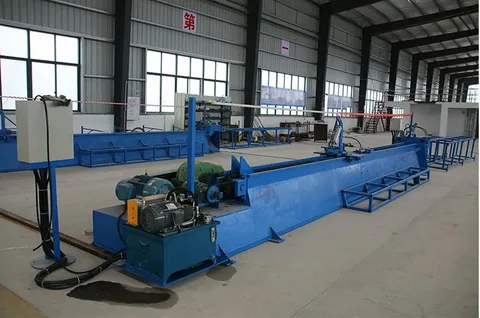Cold drawing is a process of reducing the cross section of metal bars and coils. The resulting product has a bright finish and improved mechanical properties. It also has precise dimensional tolerances.
During the drawing process, the tensile strength and yield strength of the alloy increase while its plastic properties decrease. These dependences depend on the technological parameters of the drawing route.
Types
There are several types of Cold drawing machine available in the market. Some are capable of forming sharp angles, radius bends and scrolls up to 420 degrees. Others feature a tracker to enable directional pointing of the inlet wire rod. Some are equipped with a shave or milling pointer that can create points up to 6.5 ft. (2 m).
Some are built with tilted-axis capstans, which eliminate the need for sheaves and allow a small deflection of the wire path that is used for speed control. This arrangement allows the capstan to be driven at different speeds and enables a drafting schedule that accommodates a wide range of diameter reductions.
The Cold-Drawn process is performed at room temperature and stretches the lead ends of a bar or coil of steel wire to reduce its cross section and shape its profile. The finished product exhibits a bright finish, improved mechanical properties and dimensional tolerances. In some cases, the material is annealed between draws to remove cold work and increase its ductility.
Advantages
Drawing is a process that reduces the cross-section of wire rod to shape it. This makes the rod stronger and more precise. It also increases ductility. It can be used to produce different shapes for metal tubes, rods and bars for use in various industrial applications.
The electrical wiring on a modern drawing machine is much more sophisticated than in the past. Instead of hard wiring between motor drives and the PLC, high-speed data buses are now used. This allows many control signals to be digitized and carried over a single pair of wires, saving time and money.
Modern drawing machines are designed to be highly efficient and productive. A common design feature is the accumulator block at each tilted capstan, which helps maintain an even draw. This allows the draw block to operate with a lower overall power consumption than traditional systems. Additionally, the accumulator block can help reduce the frequency of wire breaks.
Requirements
Cold drawing machines reduce the cross section of round steel wires by pulling them through a series of dies. The process shapes the metal to a specific diameter and wall thickness for use in various industrial applications. It is possible to draw a wide range of shapes including square, hexagonal, and seamless steel rods.
The requirements of Cold drawing machine include special materials and capstan designs to provide high-speed performance without sacrificing strength or durability. The outer block surface is usually hardened by heat-treating or coating with wear resistant material, and the capstans are designed to eliminate a natural wire twist and maintain a dead flat wire package.
Spooler motor power must be sufficient to drive a maximum weight spool at top speed and accelerate it from a stationary start. Some systems feature a full-screen personal computer based color display for data presentation and reporting, and some offer the ability to connect with a plant-wide information network.
Cost
The cost of Cold drawing machine can vary depending on the type of machine and the material being drawn. For example, high-carbon wire such as pre-stressed concrete strand may require forced air-cooling on the capstans (see Figure K14). This cooling method requires extensive equipment and energy costs to operate. It also disperses the airborne drawing soap around the machine, which reduces its efficiency and causes environmental problems.
Rod Payoff designs have improved to match the increased finishing speeds of modern draw machines. Whether flipping from stationary coils or unreeling from rotating coils, the new systems allow fast changeovers and less downtime.
Pointing machines are an important part of metal wire drawing production equipment. They narrow the end of raw wire by hammering, filing, rolling or swaging to reduce the diameter before the drawing die is used. A properly pointing machine can increase the life of the die by avoiding premature wear and tear. It can also help ensure consistent tensile strength by making sure the forming process is even and complete.

